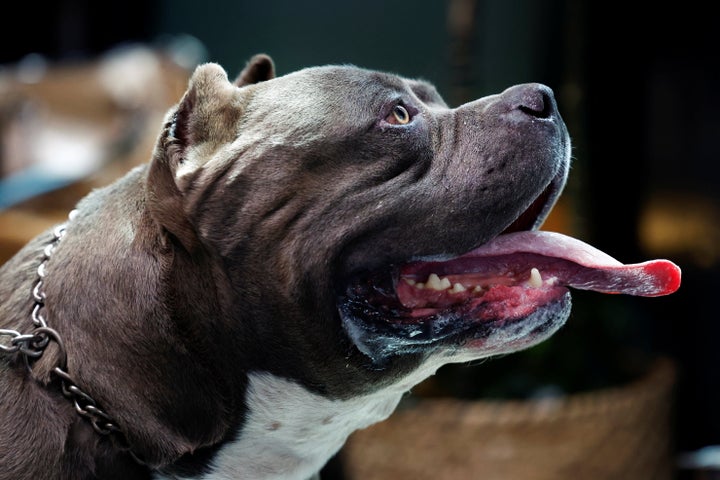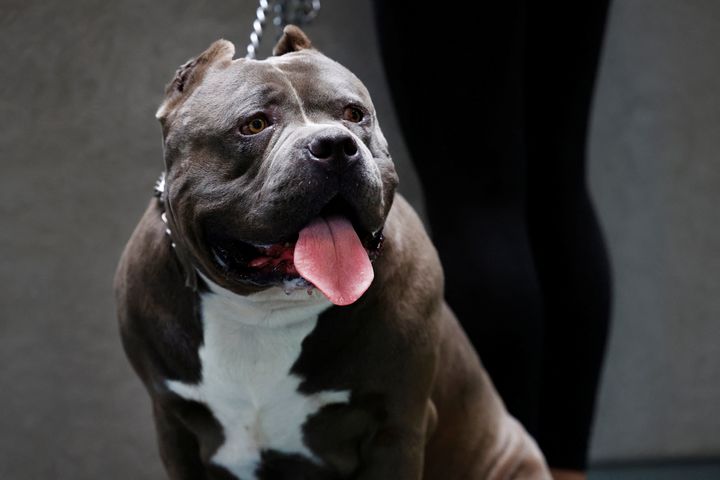
Rishi Sunak has just announced that American XL Bullies will be banned by the end of the year.
It comes after a man was mauled to death on Thursday afternoon in Staffordshire, and an 11-year-old was attacked by the dog breed last Saturday.
Writing on X (formerly Twitter) last weekend, the home secretary described the breed as a “clear and lethal danger”, while sharing an article describing how girl and two others were attacked in Birmingham.
Suella Braverman told The Sun: “They are terrorising our communities and pose a particular threat to children. It must end.”
And, shortly after a man was killed by two dogs suspected to be XL bullies, the prime minister announced that the breed will be banned by the end of 2023 to end such violent attacks and to ”keep people safe”.
In a video statement posted on X, he said: “The American XL bully dog is a danger to our communities, particularly our children.
“I share the nation’s horror at the recent videos we’ve all seen.”
He also said it was a “pattern of behaviour” among these dogs.
Here’s everything you need to know about the dog breed, and why it has not been banned before.
Why are American XL Bullies so divisive?
As legal academic Dr Lawrence Newport – who is campaigning to get “these dangerous dogs off Britain’s streets” – suggested on X, deaths linked to dogs have increased dramatically since 2022.
He claimed 70% of these deaths since 2021 are related to the American Bully, meaning the breed is around 270 times more deadly than the rest of the dog population.
Dr Newport pointed out that these stats don’t cover how this dog breed is responsible for injuring children and other pets, too.
The dogs were bred from fighting pit Bulls in the early 90s, before being inbred for size and strength.
Pit Bulls have been banned since 1991 – but they’re still responsible for a third of UK dog-related deaths.
What does banning the dog breed mean?
If a breed goes on the banned dogs list, it means it is illegal for anyone in the UK to own, breed or sell them.
The penalty for illegal possession of a prohibited dog is an unlimited fine, or six months imprisonment (or both).
The gov.uk website adds: “Your dog will also be destroyed.”
Even if it is not acting dangerously and there has been no complaint against it, your dog can be removed from you by the police or local council dog warden.
As of September, the Pit Bull Terrier, the Japanese Tosa, Dogo Argentino and Fila Brasileiro are the only breeds on the list.

Why wasn’t the American Bully banned before?
The animal charity, the RSPCA, has pushed back against any dog bans, suggesting it means innocent canines can be put down.
Campaigners want it to be an individualised issue instead, where owners and their dogs face consequences instead of a whole breed.
Ultimately, the department for environment, food and rural affairs (Defra) will decide if the breed can be added to its banned list.
Defra told The Guardian it takes dog attacks and antisocial behaviour “very seriously” and are making sure the full force of the law is being applied.
A spokesperson said: “This can range from lower-level community protection notices – which require dog owners to take appropriate action to address behaviour – to more serious offences under the Dangerous Dogs Act, where people can be put in prison for up to 14 years, be disqualified from ownership or result in dangerous dogs being euthanised.”
According to the PA news agency – via The Guardian – there were concerns within Defra over how feasible it is to add the breed to the banned list, because it is not recognised as a specific breed by the Kennel Club.
There were concerns that a ban on the American XL Bully could end up banning a range of dogs.
That’s why Sunak said he is working with police and experts to define the breed in law, before banning them under the Dangerous Dog Act.
